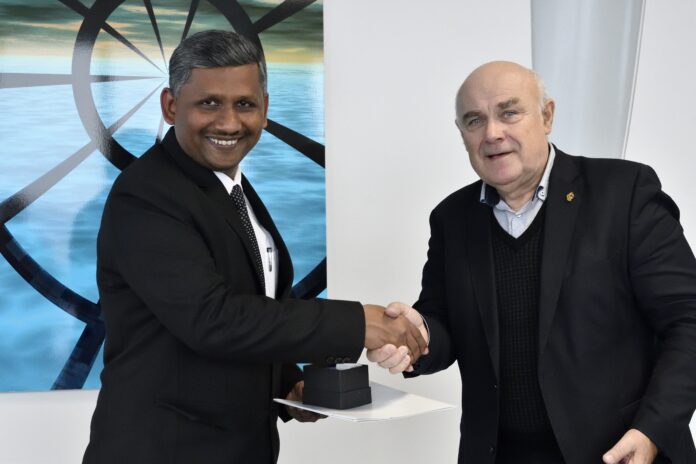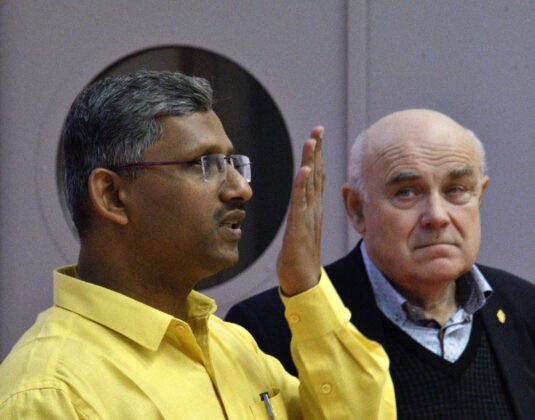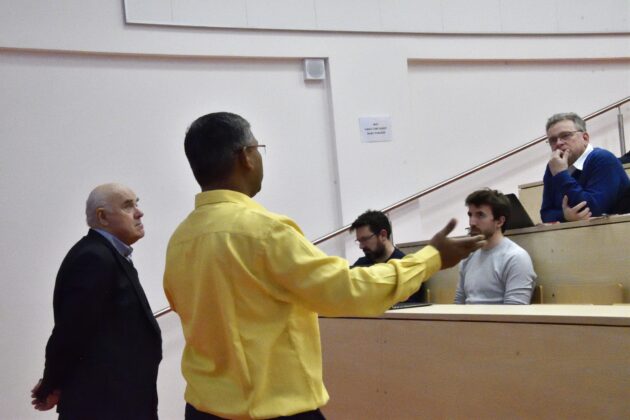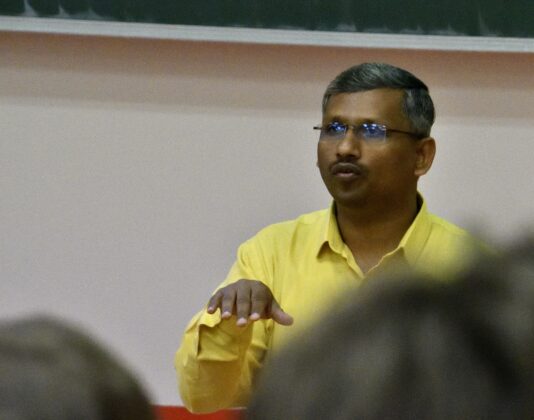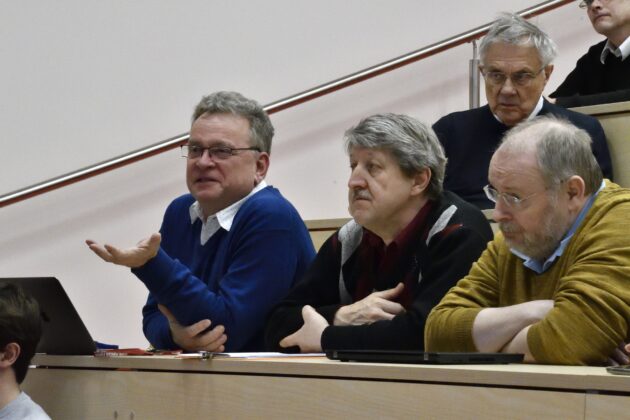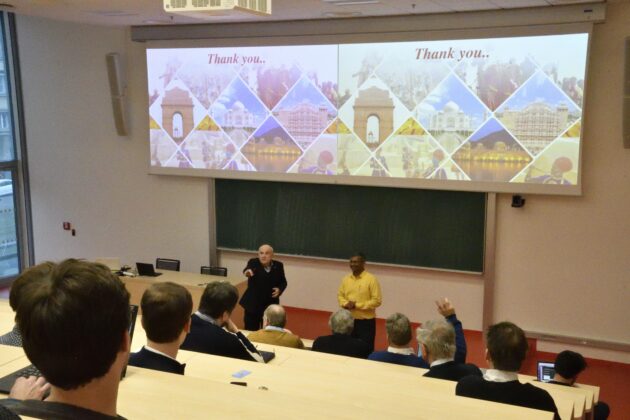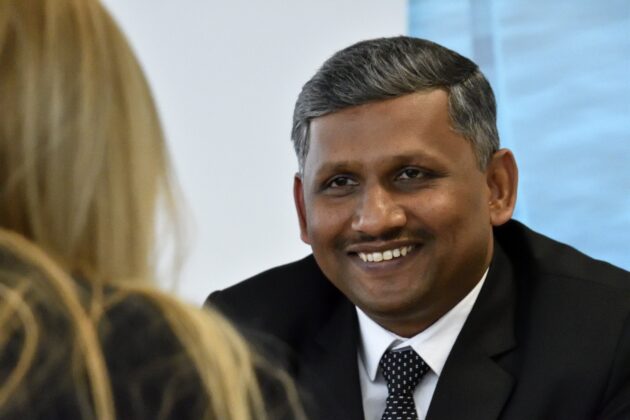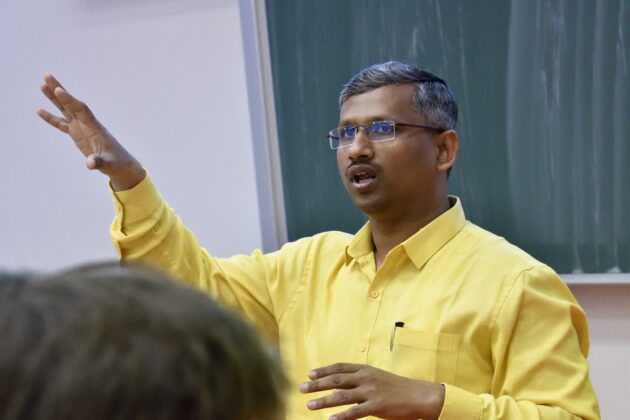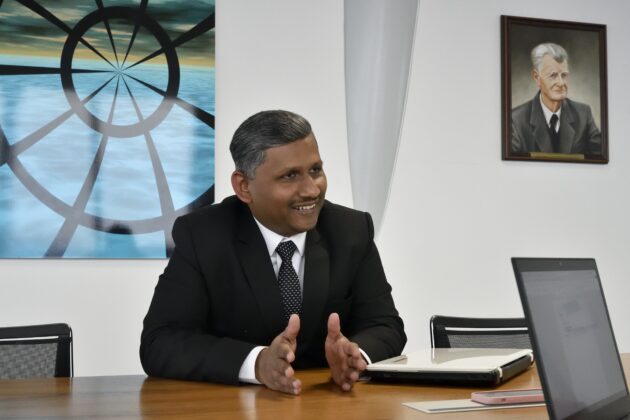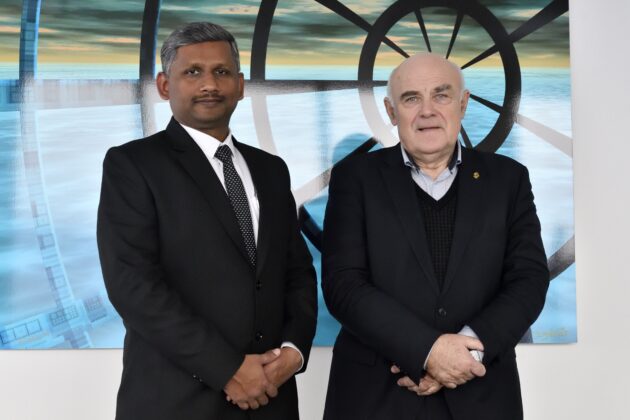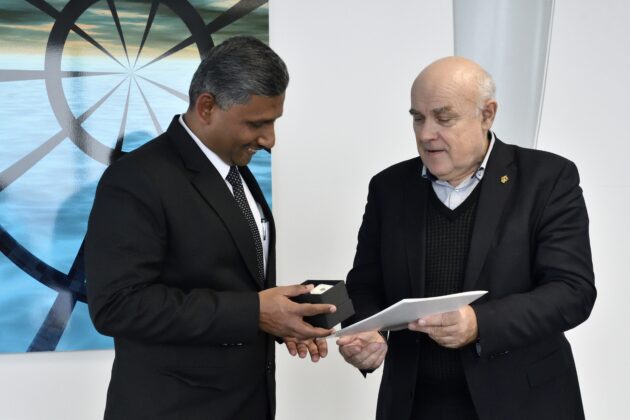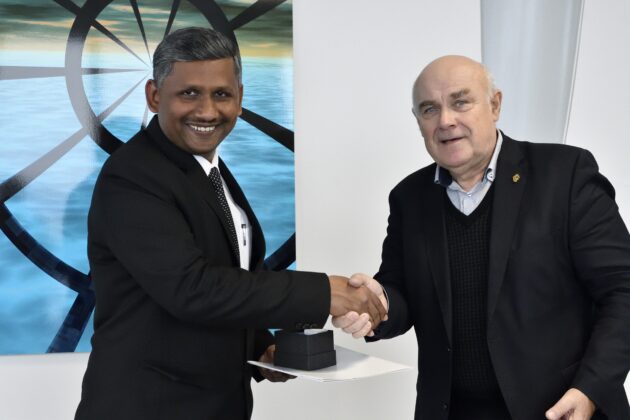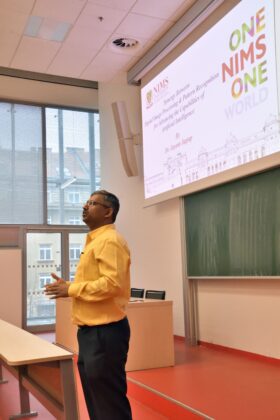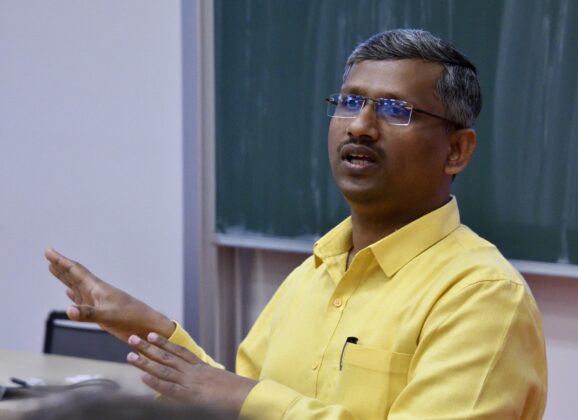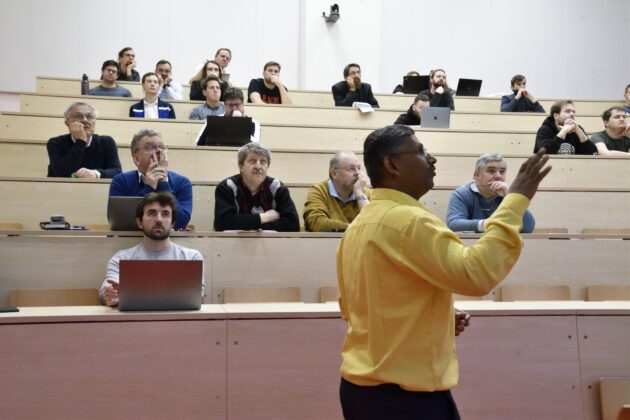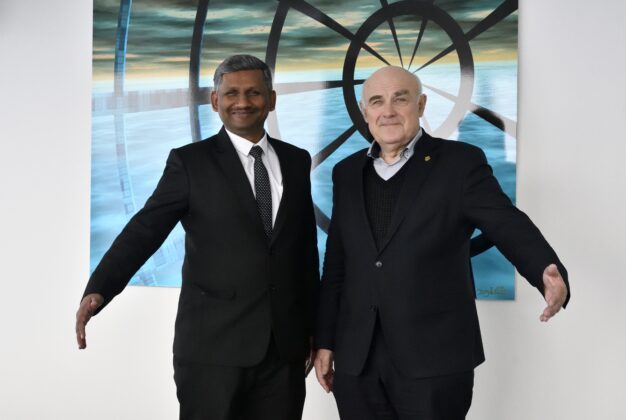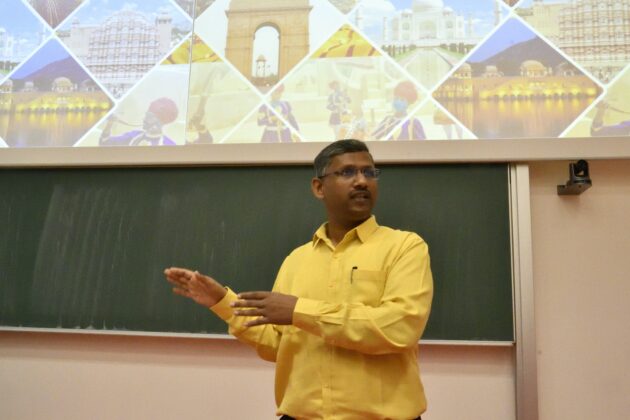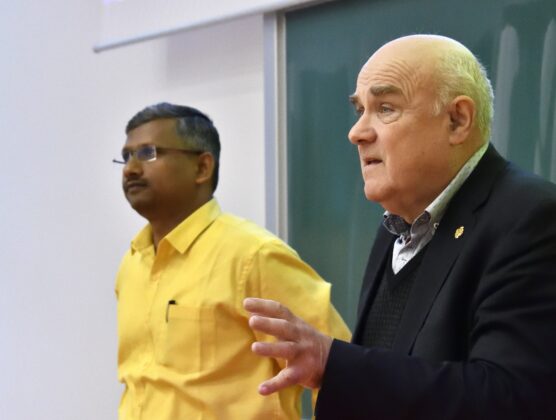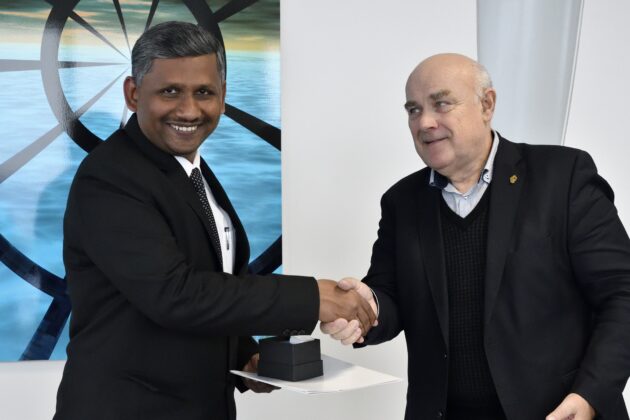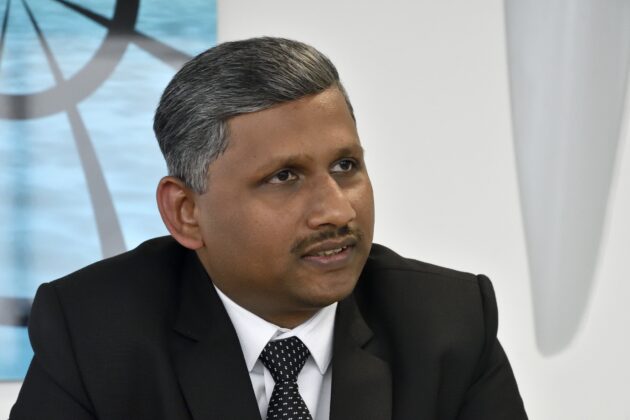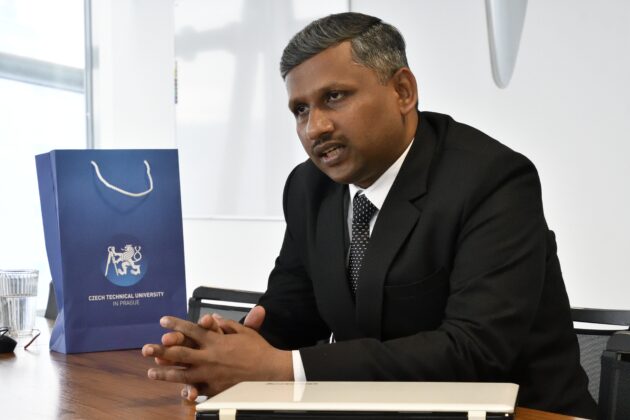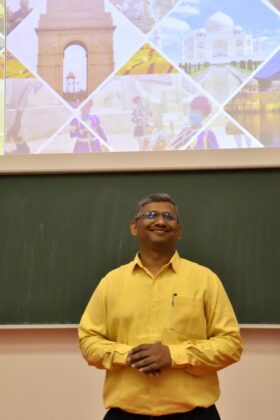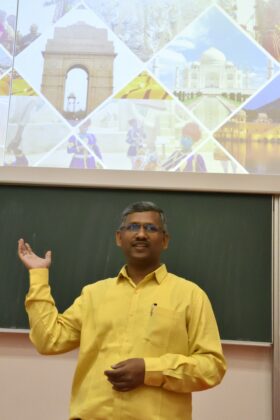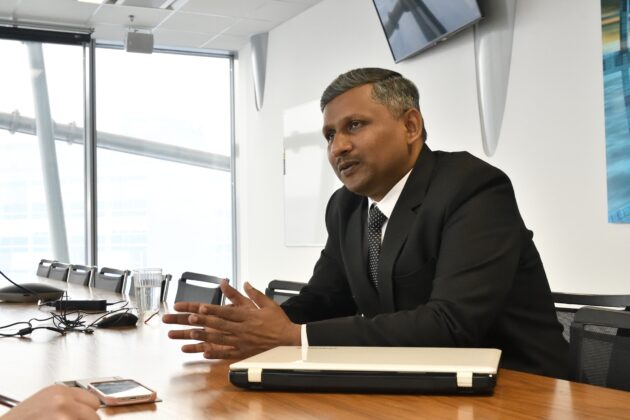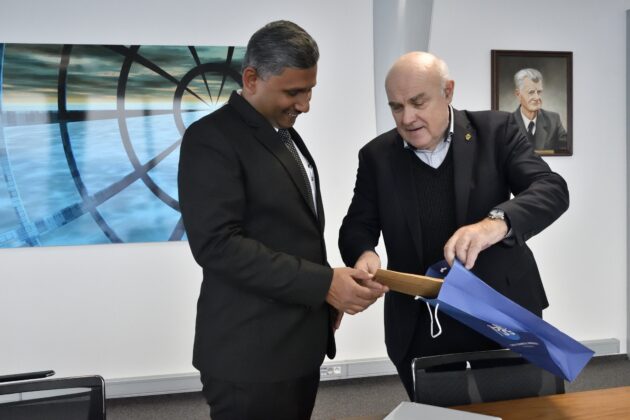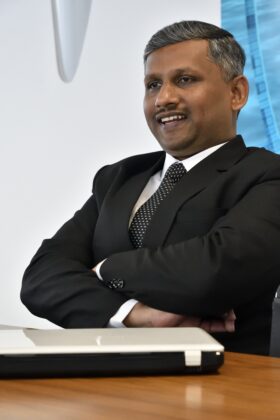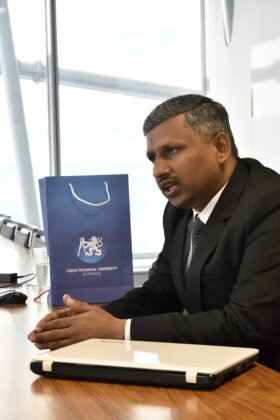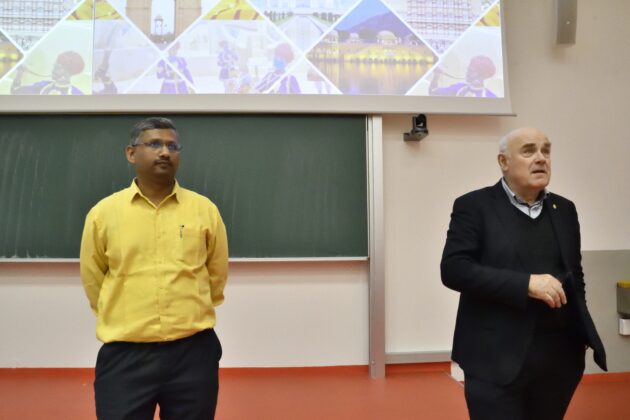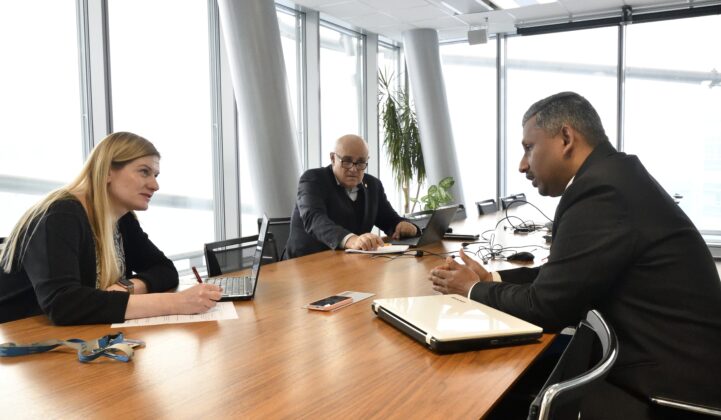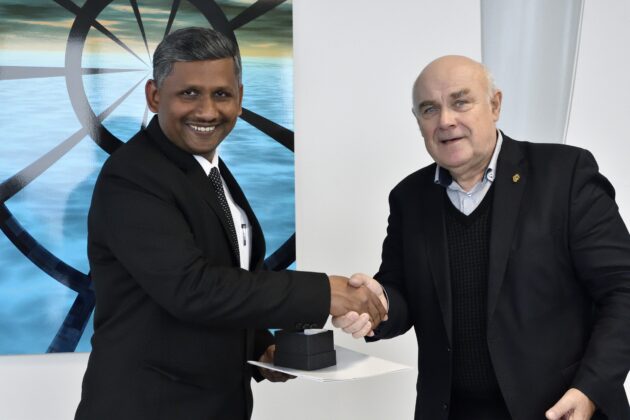Jayant Jagtap, the representative of the NIMS University, Jaipur, India, visited the Czech Institute of Informatics, Robotics, and Cybernetics in the end of January. Following the visit of prof. Vladimír Mařík and Ondřej Velek in India, Dr. Jagtap had a chance to meet with the representatives of CIIRC and visit our labs and departments and discuss cooperation, the establishment of the new Marik Institute in India, and much more.
Dr. Jagtap also gave a lecture on his current research: Synergy Between Digital Image Processing & Pattern Recognition for Advancing the Capabilities of Artificial Intelligence.
We used this great opportunity and asked Dr. Jagtap about his visit to the Czech Republic and also AI in India.
Dr. Jagtap, you‘ve spent here about a week now. What is your impression about Prague or Czech Republic? Is there anything that has surprised you or you particularly like?
I was quite surprised with the weather. In one day, it was sunny, it was raining and also it was snowing. On that day, we visited the Faculty of Biomedical Engineering in Kladno and I experienced all these kinds of weather in one day.
Please tell us more about Marik centre in India. Why is our institute a role model for you? What are the goals and research topics of the institute?
It was the vision of Prof. (Dr.) Balvir S. Tomar- Chancellor of NIMS University and our management, who decided to create the Marik Centre. Originally it was was planned as a seven-story building. With the interest of faculty and also the Indian government and great acceleration of the Czech Institute, we decided to make it into a eight-story building and instead of “centre” into Marik Institute.
And why did you choose prof. Mařík in the name of your Institute? What is interesting for you about CIIRC?
I visited many research centres across India. CIIRC in terms of different faculties, laboratories and state-of-the-art equipment, which is required for doing next-gen research, is something you see very rarely. CIIRC has also a unique setup for collaboration with industry and research commercialization. This is something we wish also to go ahead with. For business companies such infrastructure is rarely available – in case they need some new prototypes, proof of concept, business model or innovation, the technology is available and they can use it without building their own infrastructure or research centre.
How many labs/research staff are you planning at the Marik Institute?
As of now, we are planning twenty labs spread across five floors. Two floors are reserved for administration and faculty seating. Currently, we are planning 60 employees at the start of the AI department. As we increase our research and set up the labs, we will increase our staff accordingly. We will need researchers, but also students, both undergraduate and postgraduate. We plan to accommodate both Indian researchers and researchers from abroad in equal ratio.
Throughout the week you had a chance to visit every single lab we have here. Can you provide me with some examples of what has inspired you or what was useful for you in relation to your Institute? What did you learn?
All the labs are very good. I am very much looking forward to future collaboration and research. Every lab and every set-up was new to me. I am specialized in medical image analysis, I particularly work with agricultural images and human images, so that your departments of Neuroscience and Biomedical Engineering (COGSYS and BEAT) were very interesting for me.
At Marik Institute we are also planning to have something similar to your Testbed. As we are a self-financing institute, we will build this gradually and we also plan to use the resources from European-Indian funding and apply for Indian government funding to set up the rest of the equipment.
What are the next steps in Czech Indian (European) Cooperation? What are the plans for this year and 2025?
Immediately I’ll be connecting the rest of my colleagues with the researchers here according to their fields of research. It is robotics, cybernetics, aerospace, mechanical engineering and others. They will learn about your facilities and opportunities here, so that undergraduate and postgraduate students can already plan their summer internships here or any kind of collaborative projects.
There is almost unlimited area of interest in AI research and its applications. What areas are particularly interesting for you? What labs do you plan to setup first?
For us it is very important to go with the agricultural goals of India and its sustainability. We will work on topics such as drone technology in collaboration with you and your Department of Intelligent and Mobile Robotics. We will apply for suitable grants in this area and also we need to find suitable collaborators from industry such as drone manufacturers and also a farm, where we can test all the research.
Czech Republic is very industrial country and innovative technologies – Industry 4.0 – are a way to better sustainability, energy efficiency, or material savings. What are the greatest challenges for India?
Farming and agriculture industry, new innovation and sustainability are very important topics for India and much research is conducted here. Particularly the engineers are working in precision agriculture: we very much focus on technology, specific selection of crops and its way to the market. We would like to optimize the supply chain management. Also selection of pesticides is important. Now farmers are starting to use the technology – as easy as smartphones. In one touch we can provide them with information leading to increasing of the productivity.
In the past years the world has undergone great changes. Asian countries, India among them, play currently bigger and bigger role as the leaders of innovations. How is AI, technology and academic sector supported by the government?
The Indian government is now finalizing its policies for ethical AI. Also, the government is promoting and motivating researchers to contribute to responsible AI. They are providing grants, there are calls for dedicated research in AI, and the government promotes this area and research significantly.
EU supports AI significantly, but also faces criticism that with heavy regulation we are getting behind and not developing fast enough. Do you think that this could be the case also in India?
No. We need the regulation to make things work smoothly. And we can also identify the misuse of the technology. There should be punishment for that. That’s why we need law and regulation in this area.
How is transfer of technology and cooperation between academic sector and business organized? Is it natural part of academic sector or is it a great challenge? How do you overcome obstacles?
Nowadays the scenario has changed in India. Industries are stakeholders for designing the curriculum and the syllabus of what we teach students – we take the inputs from industry. Our students have internships in companies and it is a part of the curriculum for six months. The students experience the corporate culture and demands of the industry.
Companies are also helping to establish the research labs in academic institutions and providing the support for it.
In Europe, and CIIRC is more than just an example, the research is often supported by EU funding. How does financing of research work in India?
NIMS is a private university, so that we have some private funding as well. We are also applying for the government funding and also we use the funding directly from industry. We use all those three resources. And it works at most Indian universities similarly. The proportion of course varies. The government does not fund all sectors, currently it very much promoting AI. There are specific agencies, where you can find suitable calls, for science and technology there is DST. There are also special calls for women in Engineering now.
It is obvious that CIIRC and NIMS have much in common. What about humanities, are those areas also supported?
Yes, the humanities are supported. The first-year students of engineering have to have some amount of humanities subjects. It is mandatory and we see it as important.
Let’s wrap up— your visit of CIIRC is now over. What is the message you are taking from here?
I can say that the collaboration starts with great enthusiasm. From the Czech side, I’ve received enormous support and everyone took care of me a great deal. I did not need to ask for anything which was not already provided. I would not even imagine such a support from a renown and high-profile researchers. It is very impressive. Thank to Prime Minister of the Czech Republic for recent visit to NIMS University Rajasthan, Jaipur at Marik Institute.
Thank you for your time.
Biography of Dr. Jayant Jagtap
I am Dr. Jayant Jagtap, currently working as an Associate Professor and HOD for the NIMS Institute of Computing, Artificial Intelligence, and Machine Learning at NIMS University Rajasthan, Jaipur, India.
I possess over 14+ years of dedicated experience in teaching and hold a substantial track record in research, having contributed 25 Scopus/WoS-indexed publications to esteemed international journals, along with 7 Scopus-indexed publications in international conferences. Additionally, I am actively engaged as a reviewer for more than 15 international journals and have provided my expertise as a reviewer for various international conferences.
As a recognized guide I have successfully supervised the completion of the Ph.D. pursuits of two research scholars under my mentorship.
My areas of interest and expertise include digital image processing, pattern recognition, medical image processing, medical image analysis, artificial intelligence, machine learning, deep learning, and computer vision.
My expertise has been recognized through invitations to deliver expert talks by various national and international organizations, in addition to conducting specialized training for corporate professionals in the AI domain. I maintain active membership in multiple professional bodies such as IEEE, IEI, and IETE.
Remaining committed to continual self-improvement, I have attended over 22 Faculty Development Programs (FDPs) and completed 9+ Massive Open Online Courses (MOOCs) in my areas of interest. Proficient in programming related to AI&ML, I aim to stay abreast of cutting-edge technologies.


